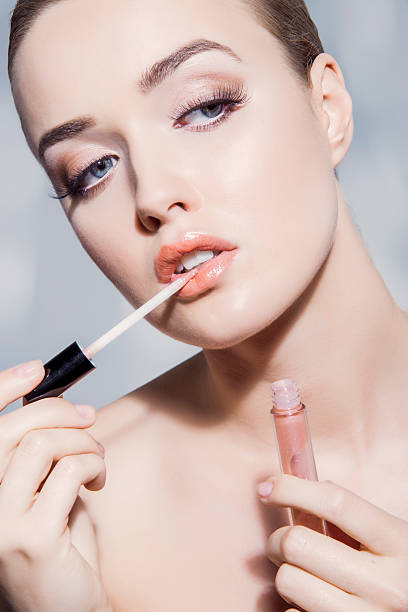If you’re someone who loves makeup, then lip gloss must be one of your favorite products. It adds a shiny finish to your lips, making them look plumper and more hydrated. But have you ever wondered what exactly lip gloss is made of? In this article, we’ll explore the ingredients that go into making lip gloss, its pros and cons, alternatives, and tips for using it.
What is Lip Gloss Made of?
Lip gloss is a type of cosmetic product that’s designed to add shine and moisture to the lips. A 2021 study published in the journal “Dermatology and Therapy” found that the ingredients in lip gloss can vary depending on the brand and type of lip gloss. For example, some lip glosses are made with all-natural ingredients, while others contain synthetic ingredients. Some lip glosses are also vegan and cruelty-free. While different brands may use slightly different formulations, most lip glosses contain the following key ingredients:
- Wax: Wax gives lip gloss its semi-solid consistency and helps it to adhere to the lips. Common waxes used in lip gloss include beeswax, candelilla wax, and carnauba wax.
- Oils: Oils help to hydrate and moisturize the lips. Common oils used in lip gloss include jojoba oil, coconut oil, and mineral oil.
- Pigments: Pigments give lip gloss its color. Common pigments used in lip gloss include titanium dioxide, iron oxide, and mica.
- Flavorings: Flavorings are added to lip gloss to give it a pleasant taste. Common flavorings used in lip gloss include vanilla extract, mint extract, and fruit extracts.
- Fragrances: Fragrances are added to lip gloss to give it a pleasant smell. Common fragrances used in lip gloss include vanilla, rose, and strawberry.
In addition to these essential ingredients, lip gloss may also contain other ingredients, such as:
- Sunscreen: Sunscreen is added to lip gloss to protect the lips from the harmful UV rays of the sun.
- Vitamins and antioxidants: Vitamins and antioxidants are added to lip gloss to nourish and protect the lips. Common vitamins and antioxidants used in lip gloss include vitamin E, vitamin C, and green tea extract.
- Glitter: Glitter is added to lip gloss for a decorative effect.
The ingredients in lip gloss can vary depending on the brand and type of lip gloss. For example, some lip glosses are made with all-natural ingredients, while others contain synthetic ingredients. Some lip glosses are also vegan and cruelty-free.
How to make lip gloss at home
natural lip gloss ingredients
- 1 tablespoon of beeswax
- 1 tablespoon of shea butter
- 1 tablespoon of coconut oil
- 1 teaspoon of vegetable glycerin
- 1/2 teaspoon of jojoba oil
- 1/4 teaspoon of mica powder (optional for color)
- 1/4 teaspoon of essential oil (optional for flavor and scent)
Instructions
- Melt the beeswax, shea butter, and coconut oil in a double boiler or in a microwave-safe bowl.
- Once the beeswax, shea butter, and coconut oil have melted, remove them from the heat and add the vegetable glycerin, jojoba oil, mica powder (if using), and essential oil (if using).
- Stir the ingredients together until well combined.
- Pour the lip gloss mixture into a clean container and let it cool and solidify.
Once the lip gloss has cooled and solidified, it is ready to use. Apply it to your lips with a lip brush or with your finger.
Tips for Using Lip Gloss
- Exfoliate your lips before applying lip gloss
- Choose the right shade for your skin tone: If you have fair skin, opt for lighter shades like pink or peach. If you have darker skin, bolder shades like red or berry will complement your complexion.
- Use a lip liner to prevent feathering: Lip gloss can sometimes bleed into the fine lines around the lips. To prevent this, apply a lip liner in a similar shade to your lip gloss.
- Apply with a light hand: Less is more when it comes to lip gloss. Start with a small amount and build up as needed.
- Blot excess product with a tissue: To avoid the sticky feeling that can come with lip gloss, blot your lips with a tissue after applying.
FAQs
- How often should I reapply lip gloss? Lip gloss tends to wear off quickly, so you’ll likely need to reapply every couple of hours or after eating or drinking.
- Can I wear lip gloss on top of lipstick? Yes! Lip gloss can be worn on its own or layered over other lip products, including lipstick.
- Can lip gloss cause allergic reactions? Some lip glosses may contain allergens like fragrances or dyes that can cause reactions in some people. Always check the ingredient list before trying a new product.
- Does lip gloss make your lips look bigger? Yes! The shine and reflection of lip gloss can create the illusion of fuller, plumper lips.
Final takeaway
Lip gloss is a fun and versatile lip product that can add shine, hydration, and dimension to your lips. By understanding what it’s made of, its pros and cons, alternatives, and tips for using it, you can make an informed decision about whether or not it’s right for you. Experiment with different shades and formulas to find the perfect lip gloss for your needs, and don’t be afraid to try out other lip products as well. With the right technique and products, you can achieve a beautiful, healthy-looking pout that you’ll love flaunting wherever you go.







